We have been reviewing “Through the Gates of the Silver Key” written by H.P. Lovecraft and E. Hoffmann Price for over three months – since late January 2017. While there are other topics in this tale that could continue to be discussed from both a scientific and metaphysical perspective, this subject will be the last, at least for now. In these last two articles, we briefly review some of the planets that Randolph Carter viewed as he traveled through time and space to eventually make it our Solar System, to Earth, in the year 1930.
 Randolph Carter in the body of a Yaddithian but disguised as Swami Chandraputra
Randolph Carter in the body of a Yaddithian but disguised as Swami Chandraputra
As Carter left the dying world of Yaddith he sensed “…a hideous gnawing of cold, a cessation of menacing dreams, and a glance through the eye-plates of the envelope. Stars, clusters, nebulae, on every hand – and at last their outlines bore some kinship to the constellations of earth that he knew.” The recognition of familiar constellations was a strong indicator for Carter that he was in the proper Space-Time. Even if Carter was approaching our Solar System, if the constellations did not look familiar then that would have informed him that he arrived at the right place but the wrong time; Carter may have arrived at Earth millions of years ago when the Elder Things were building their aquatic cities or in the distant future when the Coleopteran (beetles) civilization is the dominant form of sentient life on Earth. However, he did make it to our Solar System in the first half of the 20th century.
The rest of this article discusses what Carter saw as he passed through the Solar System, heading toward Earth. During this last leg of his journey he stated:
“He saw Kynarth and Yuggoth on the rim, passed close to Neptune and glimpsed the hellish white fungi that spot it, learned an untellable secrete from the close-glimpsed mists of Jupiter and saw the horror on one of the satellites, and gazed at the Cyclopean ruins that sprawl over Mars’ ruddy disc.”
 A Silver Sparkling Moon by John Doop (www.deviantart.com)
A Silver Sparkling Moon by John Doop (www.deviantart.com)
According to Joshi (Lovecraft and a World in Transition: Collected Essays on H.P. Lovecraft, 2014) Kynarth may be the “tenth” planet in our Solar System, with Yuggoth (also known as Pluto) being the ninth. Joshi’s support for this hypothesis is due to the fact that as Carter described his observations while traveling through the Solar System, they seem to be recorded in a sequence from furthest to closest; Kynarth and Yuggoth, then Neptune, then Jupiter and its satellites, then Mars. Thus, since Kynarth is named first it must be the tenth, or as we would call it now the ninth, planet.
It is generally accepted that Yuggoth is not a planet but a dwarf-planet, being one of many trans-Neptunian objects (TNOs), in the Kuiper belt, which is a circumstellar disc of the Solar System beyond Neptune. The Kuiper belt spans a distance from the orbit of Neptune (about 30 AUs away) to approximately 150 AUs from the Sun. The Earth is 1 AU from the Sun. AU stands for Astronomical Unit.
 The Kuiper Belt in relation to the gas planets of our Solar System (www.nasa.org)
The Kuiper Belt in relation to the gas planets of our Solar System (www.nasa.org)
If Yuggoth is a TNO, then Kynarth may be one as well. In addition, considering how Kynarth and Yuggoth are stated together in the same clause, Kynarth may the largest moon of Yuggoth (Pluto) called Charon. It is interesting to note that the center of mass between Pluto and Charon is not Pluto itself but instead somewhere between the two bodies. In addition, Charon is over half the diameter of Pluto. Thus, instead of being a planet / moon system like the Earth and its moon, the Pluto / Charon system may be better described as being a double, dwarf-planet system. Thus, “Kynarth and Yuggoth on the rim” may actually be in reference to a double, dwarf-planet system of TNOs within the Kuiper belt.
 Is Pluto and its largest moon Charon really a double dwarf-planet system of Yuggoth and Kynarth?
Is Pluto and its largest moon Charon really a double dwarf-planet system of Yuggoth and Kynarth?
The alternative to the Kynarth TNO hypothesis is Joshi’s, where Kynarth may be the true ninth planet in the Solar System, accepting the definition that Yuggoth is a dwarf-planet. Evidence for the presence of a large, planet beyond Neptune and on the outer rim of the Solar System can be found in the movements of some TNOs within the Kuiper Belt.
Essentially, some unusual observations have been made of some of the TNOs in the Kuiper Belt. Many of the TNOs all have perihelia (the points of their orbits closest to the Sun) that cluster near the ecliptic plane. A more detailed analysis of six of these objects show them to have clustered perihelia as well as elliptical orbits oriented the same way, about 30 degrees below the ecliptic plan. If there was no Ninth Planet then the gravitation influence of the other giant planets would have resulted in these smaller bodies drifting away from each other. It has been calculated that there is only a 0.007% chance that the existing arrangement of these TNOs is the result of chance (Kelly Beatty, Making the Case for “Planet Nine” in http://www.skyandtelescope.com). Something must be keeping these bodies corralled and in-line with the observed orbits and this is the case for a Ninth Planet. This Ninth Planet may be Kynarth, as mentioned by Carter in his travels back to Earth.
 The clustering of TNO perihelia provide supporting evidence for the existence of a large 9th planet in our Solar System, beyond Neptune.
The clustering of TNO perihelia provide supporting evidence for the existence of a large 9th planet in our Solar System, beyond Neptune.
Based on the most recent calculations if the proposed Ninth Planet is indeed keeping these TNOs in line, it must be at least 10 times the mass of Earth and have an orbit around the Sun of between 10,000 to 20,000 years. So now the search is on to find this unknown world.
 Artist’s conception of Planet Nine in our Solar System
Artist’s conception of Planet Nine in our Solar System
At this point in time, there is evidence for both the dwarf-planet hypothesis as well as the Ninth Planet hypothesis. Is Kynarth a small TNO caught in a gravitational dance with Yuggoth? Or is Kynarth a large “ice giant” orbiting the Sun over tens of thousands of years? Obviously, other studies of the outer rim are required.
Next time we conclude our discussions of “Through the Gates of the Silver Key” by reviewing what Carter said about the other worlds in our Solar System. Thank you – Fred.
 Shining Trapezohedron
Shining Trapezohedron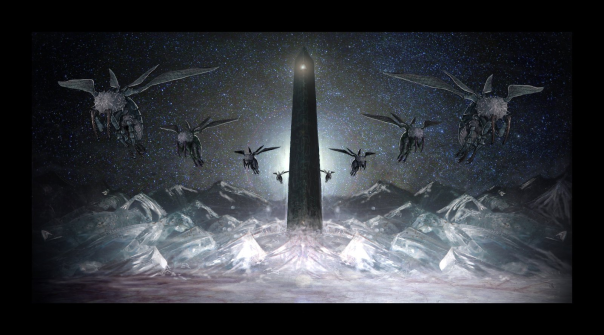 Yuggoth Watchtower by Chaberwood (www.deviantart.com). Was the Shining Trapezohedron housed in a structure like this on Yuggoth?
Yuggoth Watchtower by Chaberwood (www.deviantart.com). Was the Shining Trapezohedron housed in a structure like this on Yuggoth?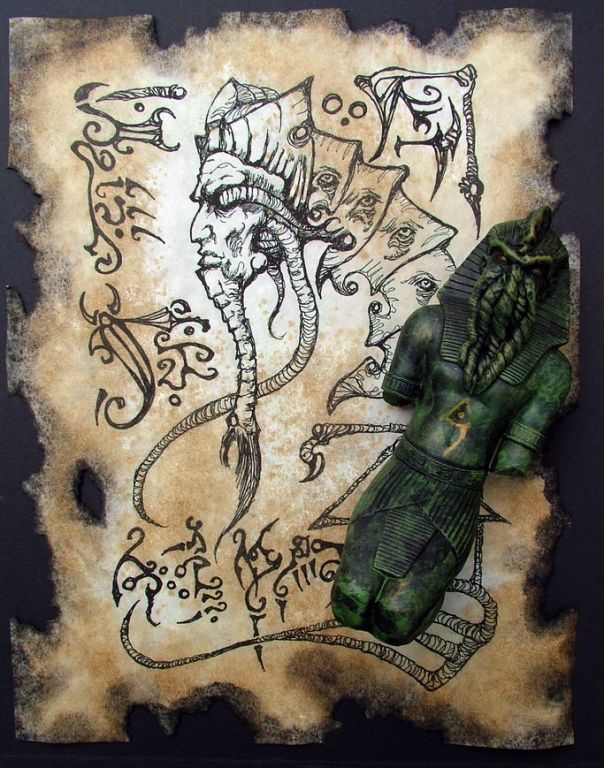 Pharaoh Nephren-Ka the Black Pharaoh by Mr. Zarono (www.deviantart.com)
Pharaoh Nephren-Ka the Black Pharaoh by Mr. Zarono (www.deviantart.com) Three-Lobed Burning Eye by Steve Purcell
Three-Lobed Burning Eye by Steve Purcell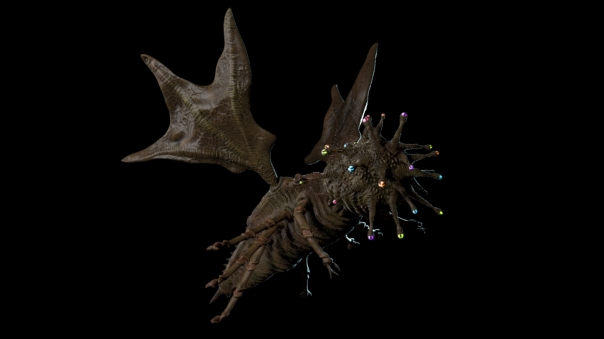 Mi-Go by Steve Maschuck
Mi-Go by Steve Maschuck The expected journey of the New Horizons spacecraft through the Kuiper Belt (www.nasa.gov)
The expected journey of the New Horizons spacecraft through the Kuiper Belt (www.nasa.gov) Mi-Go by Nathan Rosario
Mi-Go by Nathan Rosario Artist’s rendition of New Horizons first flyby Yuggoth and one of its moons (www.nasa.gov)
Artist’s rendition of New Horizons first flyby Yuggoth and one of its moons (www.nasa.gov) A demonstration of the solar winds reaching Yuggoth and being deflected off its atmosphere (www.nasa.gov)
A demonstration of the solar winds reaching Yuggoth and being deflected off its atmosphere (www.nasa.gov)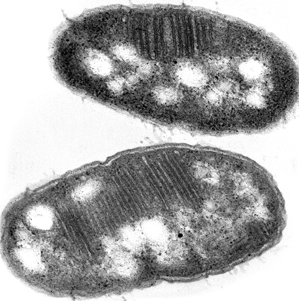 A transmission electron micrograph of some methanotrophic bacteria; taken by J.C. Lara at University of Washington (www.methanotroph.org).
A transmission electron micrograph of some methanotrophic bacteria; taken by J.C. Lara at University of Washington (www.methanotroph.org). Mi-Go by Jb Lee
Mi-Go by Jb Lee Mi-Go (www.monsterbrains.blogspot.com)
Mi-Go (www.monsterbrains.blogspot.com) The moons of the Yuggothian system (www.nasa.gov)
The moons of the Yuggothian system (www.nasa.gov) Relative scale of the Yuggothian system’s moons
Relative scale of the Yuggothian system’s moons Composite view of Nix; note the reddish color (www.nasa.gov)
Composite view of Nix; note the reddish color (www.nasa.gov) Mi-Go with a brain case by Nigromaggot (www.deviantart.com)
Mi-Go with a brain case by Nigromaggot (www.deviantart.com) The Mi-Go, artwork by Doctorgurgul, are known to live on Yuggoth (www.deviantart.com)
The Mi-Go, artwork by Doctorgurgul, are known to live on Yuggoth (www.deviantart.com) The hazy blue atmosphere of Yuggoth may be due to tholin-like particles (www.cdn4-sci-news.com)
The hazy blue atmosphere of Yuggoth may be due to tholin-like particles (www.cdn4-sci-news.com) The production of tholins in the Sagan Khare experiments (Sarah Horst of Johns Hopkins University)
The production of tholins in the Sagan Khare experiments (Sarah Horst of Johns Hopkins University) The reddish color on some parts of Yuggoth may be due to deposits of organic complexes such as tholins (www.nasa.gov).
The reddish color on some parts of Yuggoth may be due to deposits of organic complexes such as tholins (www.nasa.gov). Early interpretation of a Mi-Go by KingOvRats (www.deviantart.com)
Early interpretation of a Mi-Go by KingOvRats (www.deviantart.com) An artist’s interpretation of what the 9th planet in our solar system may look like (www.nasa.gov)
An artist’s interpretation of what the 9th planet in our solar system may look like (www.nasa.gov) Ladd Observatory of Brown University in Providence, Rhode Island
Ladd Observatory of Brown University in Providence, Rhode Island Comparing the size of Earth to Yuggoth, another dwarf-planet Xena and the moon
Comparing the size of Earth to Yuggoth, another dwarf-planet Xena and the moon A comparison of Earth, Uranus, Neptune and Yuggoth (Pluto)
A comparison of Earth, Uranus, Neptune and Yuggoth (Pluto)
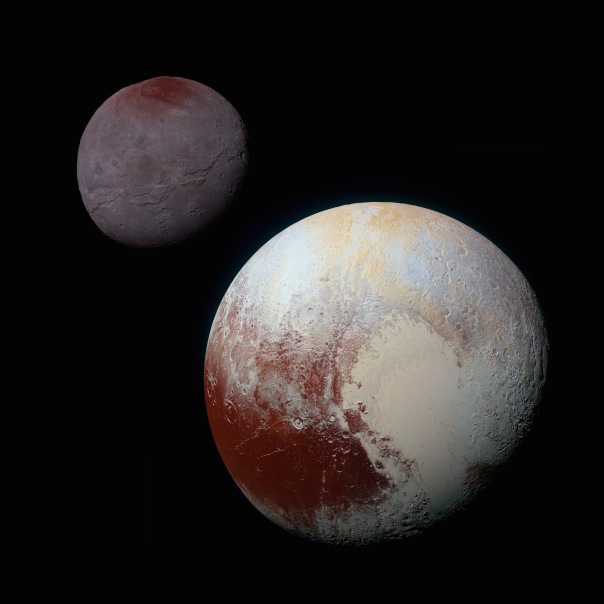
 Showing the relative size of some of the largest trans-Neptunian bodies relative to Earth. Note the size of Pluto and its largest moon Charon relative to the other objects (www.xenosystems.net).
Showing the relative size of some of the largest trans-Neptunian bodies relative to Earth. Note the size of Pluto and its largest moon Charon relative to the other objects (www.xenosystems.net). The mathematical truth of the Pythagorean theorem.
The mathematical truth of the Pythagorean theorem. Yuggoth Watchtower by Chaberwood (www.deviantart.com)
Yuggoth Watchtower by Chaberwood (www.deviantart.com) Orbits from six trans-Neptunian objective in our solar system. These observed orbits provide evidence for the existence of Planet Nine (from Caltech / Robert Hurt).
Orbits from six trans-Neptunian objective in our solar system. These observed orbits provide evidence for the existence of Planet Nine (from Caltech / Robert Hurt).



